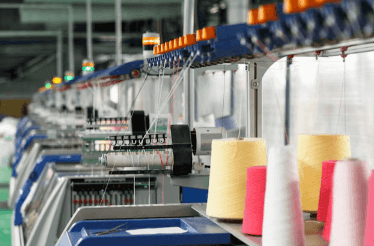Question
Statement 2: Canned food items which heat up by convection heat up faster than those by conduction.
a.
True, False
b.
True, True
c.
False, False
d.
False, True
Posted under Food Engineering
Interact with the Community - Share Your Thoughts
Uncertain About the Answer? Seek Clarification Here.
Understand the Explanation? Include it Here.
Q. Statement 1: Sterilization value of steam depends largely on the transfer of heat of vaporization to the object upon which it condenses. Statement 2: Canned food items which heat...
Similar Questions
Explore Relevant Multiple Choice Questions (MCQs)
Q. Which of the following food items is the lowest in heating up?
View solution
Q. Which of the following comes under the categories of food – broken curve heating food?
View solution
Q. Statement 1: In a thermocouple, two wires are of different materials and a voltage difference is created due to the conduction of each material at the juncture and this gives us the difference in temperature in both metals and hence the temperature of the liquid.
Statement 2: The zone of slowest heating in a container is called cold point of a container.
View solution
Q. Statement 1: The cold point of a food item getting heated up by convection has its cold point at the centre of the container on the vertical axis.
Statement 2: The cold point of a food item getting heated up by conduction has its cold point at the bottom of the container on the vertical axis.
View solution
Q. For canning technology, the cold point of the can is determined by soldering stuffing boxes and different depths in different boxes, a thermocouple in each box and a potentiometer in each box.
View solution
Q. Which of the following parameter is important to know and to plot the heating and cooling curves?
View solution
Q. The period of time elapsed from placing the cans into the retort and starting to heat until the retort reaches processing temperature is termed as _____
View solution
Q. Statement 1: The time required in minutes for a heating/cooling curve to traverse one log cycle is represented by its slope and denoted as fh and fc respectively.
Statement 2: The time when heating started is called the zero time.
View solution
Q. The rate of destruction of an organism per minute at any given temperature in a process is the reciprocal of the time in minutes.
View solution
Q. For the thermal death time curve, C= minutes to destroy the organism at 121 °C. Z= slope of thermal death time curve in °C and T= temperature under consideration and t= time taken to destroy. Then, which of the following represents the lethal rate at T?
View solution
Q. For the thermal death time curve, C= minutes to destroy the organism at 121 °C. Z=slope of thermal death time curve in °C and T= temperature under consideration and t= time taken to destroy. Which of the following is read from the graphs?
View solution
Q. By plotting the C/t values obtained from a thermal death time curve, a curve is obtained. How is the lethal value obtained from this curve?
View solution
Q. Statement 1: In thermal death time curve, after plotting C/t values from it, C value should be equal to C₀ value.
Statement 2: When C₀ value versus process time in minutes is plotted on a linear graph paper, a straight line is obtained.
View solution
Q. With respect to thermal death time curve, D value is the unit defined as the combination of time and temperature to bring about a 90% reduction in spoilage organisms.
View solution
Q. Which of the following is required for calculation of process time by Ball’s method?
View solution
Q. Which of the following statements is true?
View solution
Q. When a CUT is 10 minutes and the calculated process was 60 minutes at 116 °C, then the corrected process time is _____
View solution
Q. Which of the following factor does safe processing schedule depend upon?
View solution
Q. For heat penetration considerations for safe processing schedule, the slowest cooling and the fastest heating curves are used to calculate lethal effect of the process.
View solution
Q. Statement 1: Which of the following methods is used to determine process times for products?
Statement 2: Which of the conditions is the above method used in?
View solution
Recommended Subjects
Are you eager to expand your knowledge beyond Food Engineering? We've handpicked a range of related categories that you might find intriguing.
Click on the categories below to discover a wealth of MCQs and enrich your understanding of various subjects. Happy exploring!








